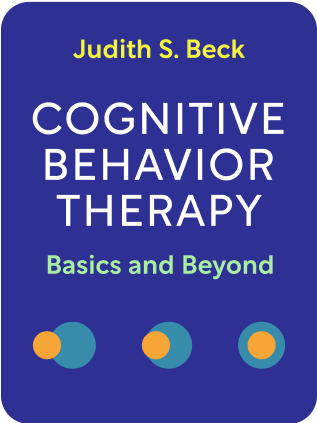

This article is an excerpt from the Shortform book guide to "Cognitive Behavior Therapy: Basics and Beyond" by Judith S. Beck. Shortform has the world's best summaries and analyses of books you should be reading.
Like this article? Sign up for a free trial here .
What tips can help you assign CBT homework to your patients? What are some examples of cbt homework tasks? How can you improve the completion rate?
Assigning homework during a CBT session can improve patient progress dramatically. It gives the patient a chance to practice what they have learned during the therapy session. Learning how to assign CBT homework successfully and improve completion rate will help your patient achieve their goals.
Keep reading for tips about assigning CBT homework.
CBT Homework Assignments
CBT homework gives the patient opportunities to practice new behaviors and thinking. Patients who regularly complete homework show better progress.
Principles of Homework
Explain the rationale of CBT homework, often in terms of improving patient affect or in proven efficacy.
Sessions should typically begin with review of homework completion, outcomes from doing homework, and appropriateness of tasks for future homework in CBT sessions.
- If the patient didn’t complete the homework, you should take blame for assigning too difficult an assignment or not explaining it well enough.
Set CBT homework collaboratively. Get patient buy-in for homework assignment.
Lean toward making homework assignments easy and able to be completed than too hard. Aim for 90-100% likelihood of completion.
- Ask the patient for their own estimation of how likely they are to complete, from 0-100%.
- It’s better to remove an assignment than to set the habit of not completing an assignment.
Make CBT homework no-lose—even if the patient doesn’t complete homework, she’ll discover thoughts that prevent her from making progress.
Homework Assignment Tasks
CBT homework assignments can take a variety of forms. Here are common tasks for patients:
- Behavior activation—the patient just does activities, such as doing light exercise or making a phone call to a friend. For newer patients, this is often more useful to improve affect than more intellectual tasks.
- Notice automatic thoughts.
- Evaluate automatic thoughts.
- Review therapy notes and read coping cards
- Example of a coping card: “If I start to think that I can’t apply for a job, remind myself that I’m only going to do it for 10 minutes, that it may be difficult but probably won’t be impossible, and that the first minute will be hardest and then it’ll get easier.”
- Problem solving—implement the solutions devised during sessions.
- Conduct behavior experiments. Record data as evidence for or against negative thoughts.
- Read other source material.
- Prepare for the next therapy session.
- Set reminders to read over homework multiple times per day.
As therapy progresses, the nature of homework may change:
- The patient may start proposing homework in CBT sessions and giving the rationale for the tasks.
- The tasks can become more complex, diving deeper into the cognitive model.
- Some regular tasks will still remain, like reviewing therapy notes daily.
Improving Homework Completion Rate
Here are techniques to increase CBT homework completion rate:
- Commitment devices
- Daily checklists of tasks
- Scheduling tasks in the patient’s calendar
- Ask the patient to leave a voicemail with you whenever finishing a task
- Find barriers for doing homework, and problem solve those barriers.
- Rehearse the situation leading up to doing homework to find issues.
- These may be practical barriers, such as lacking time in schedule or forgetting.
- They may also be mental barriers, such as overestimating time or effort, overcoming the activation energy to get started, or believing it won’t work.
- Ask the patient what the worst that can happen is, and the best.
- Remind the patient that they’re not aiming for perfection.
- Anticipate negative results of homework and address subsequent automatic thoughts
- Start homework in session, so that offline homework is merely continuation of the task rather than completion.
From this article, you’ll see that homework in CBT can be made more efficient and successful. Follow the above advice to improve the progress of your patient.

———End of Preview———
Like what you just read? Read the rest of the world's best book summary and analysis of Judith S. Beck's "Cognitive Behavior Therapy: Basics and Beyond" at Shortform .
Here's what you'll find in our full Cognitive Behavior Therapy: Basics and Beyond summary :
- How to use CBT to overcome anxiety, sadness, anger, frustration, and stress
- How to address traumatic events earlier in your life, so that they have less hold on your thinking today
- The key ways to build rapport as a cognitive behavior therapist






